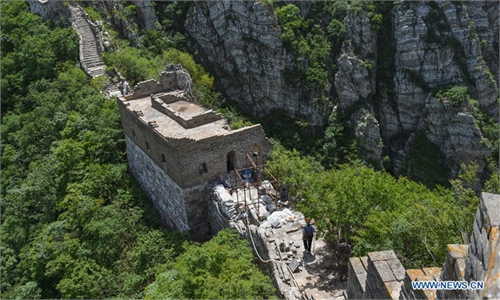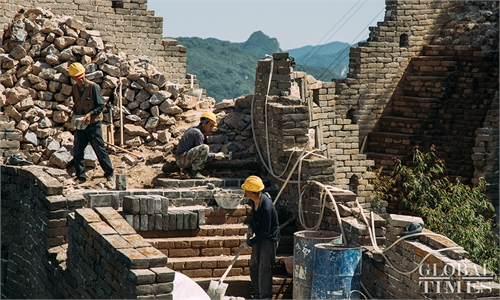IN-DEPTH / IN-DEPTH
Restoring the Jiankou section of Great Wall to retain its glory
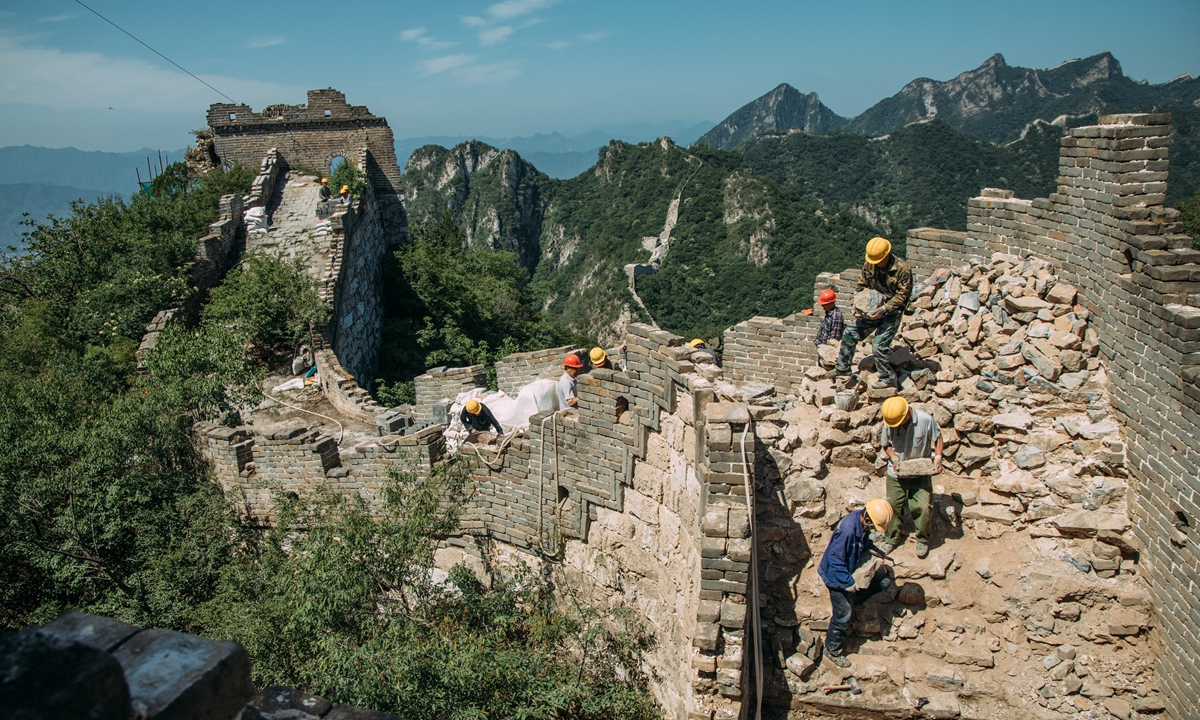
Workers repair the damaged building at the Jiankou section of the Great Wall on Wednesday. Photo: Li Hao/GT
A restoration project involving the Great Wall project is always under the spotlight, with discussions centering on how to maintain endangered relics while preserving their ancient style.
The renovation of a kilometer-long section of the Great Wall in the rugged mountains of Huairou, a northeastern Beijing suburb, has been underway since April.
Recently the Global Times visited the restoration site to have a close look at how master masons use their skills to revive another magnificent section of the historical longest defensive wall.
A controversial task
The centuries-old segment under restoration is the east part of the "Jiankou" section, which translates into "arrow nock," the notch in the back end of an arrow in which the bowstring fits. The Jiankou section of the Great Wall runs along Huairou's steep cliffs and the restoration will include eight towers. The section has a total length of 1,094 meters.
The Jiankou section is known for its ruggedness and wilderness, which has made it popular among adventurous hikers in China and from around the world. Despite the precipitous landscape, the damaged walls and towers have left lots of rubble, which pose additional risks. There used to be deaths reported each year from climbing Jiankou.
Moreover, due to natural causes and human activity in recent years, some parts of the Great Wall suffered great damage with some areas collapsing altogether. From 1949 to the Cultural Revolution (1966-76), some parts of the Great Wall were destroyed, and the bricks at Jiankou were even used to build pigsties in the village, local villagers said.
In the 1990s, people said the Great Wall, if not restored, would disappear in 30 years.
It is necessary to repair the Great Wall, but the restoration often attracts controversy. Some projects were criticized for "rebuilding the Great Wall." For instance, in 2016, a section of the Great Wall in Northeast China's Liaoning Province was renovated into a driving road. Another renovation project in Beijing turned part of the Great Wall into "shining white" and "brand-new" section.
The tension between preserving and renovating has always been haunted Cheng Yongmao, an expert in restoring ancient buildings who is in charge of the project at Jiankou. Cheng has 15 years of experience in restoring the Great Wall in Huairou. "We have to save the Great Wall while letting the public accept the renovated Great Wall."
The renovation follows the principle of "protection first," so that the original appearance and the architectural features will be maintained. "From a distance the new bricks look similar to the old ones, but by looking closely people could also spot difference," Cheng told the Global Times.
The new bricks now used to repair the Great Wall are made in North China's Shanxi Province, following the traditional method as hundreds of years ago. The bricks are of good quality, said Cheng.
Cheng led the Global Times reporters through the repaired parts of the Jiankou section. Most of the route was filled with rubble instead of flat pavement that can be seen at the Badaling section of Great Wall.
However, the rubble have actually been reinforced and fixed, making the experience more like rock climbing, safe but still challenging.
Join to protect
The current restoration is the third phase at the Jiankou section of the Great Wall, which was initially planned to take 326 days and last from January to November, but the COVID-19 epidemic stalled the project until mid-April. In late March, the administration recruited the workers, who were quarantined to get prepared for the project.
Sun Xiange, a 74-year-old man from nearby Chengde of Hebei Province, has been restoring Jiankou for three years. He does not consider climbing on the Great Wall a challenge.
Every day, the workers arrive at the construction site at around 6:00 am, before the temperature gets too high. They usually cook simple noodles as lunch.
Sometimes the workers meet Cheng, who directs them how to repair each part.
The members of the patrol team are also spotted every day on the Jiankou section of the Great Wall. They are nearby villagers.
On Wednesday, 50-year-old He Jincai patrolled with several of his teammates. Each of them climbs the Great Wall two or three times a week.
He, wearing a red cap and a red vest with the Great Wall logo, brought a woven bag previously used to take dog food up to 20kg. He uses the bag to take garbage he collects on the patrol. "After the May Day holiday, each of us could collect two full bags of garbage each day, which were left by tourists here."
The Jiankou section of the Great Wall is not open to the public as a scenic spot, but still many hikers visit. Another duty of the patrol team is to dissuade hikers from hiking or even camping on the Great Wall.
He, a descendant of Songgotu, a minister of Emperor Kangxi, said that his ancestors were those who attacked the Great Wall. "But now I am protecting it, and it is very meaningful to do so."
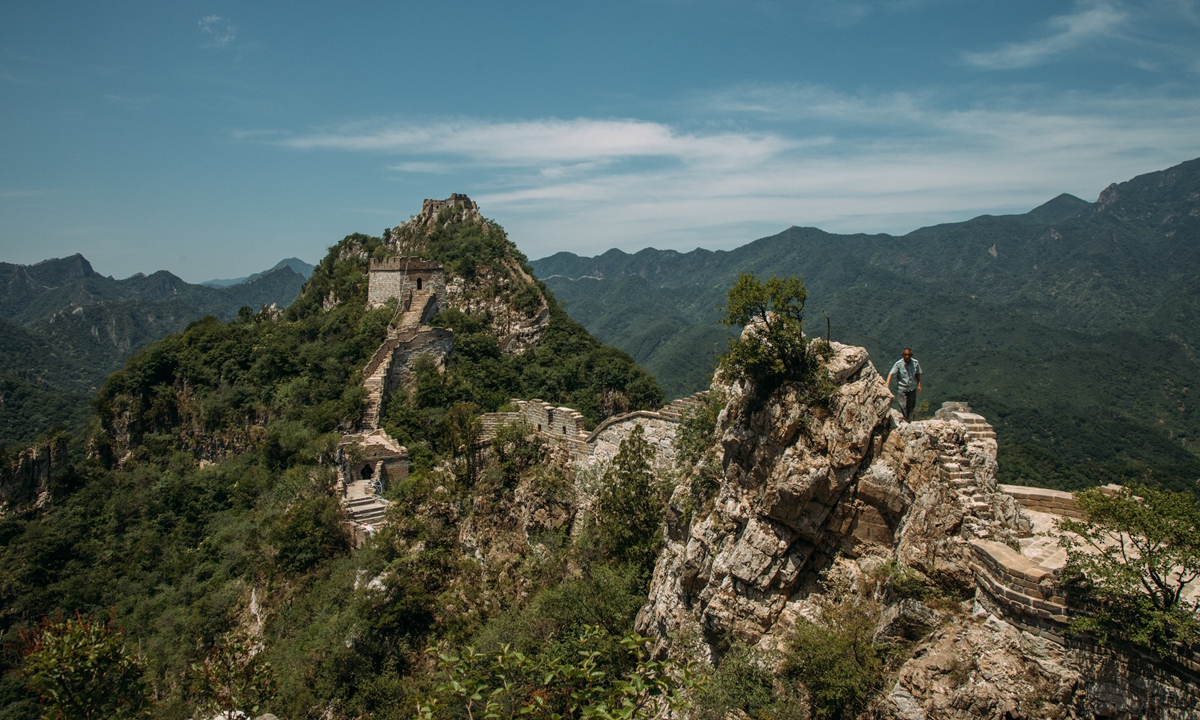
The Jiankou section of the Great Wall in Huairou, Beijing, is known for its ruggedness and wilderness Photo: Li Hao/GT
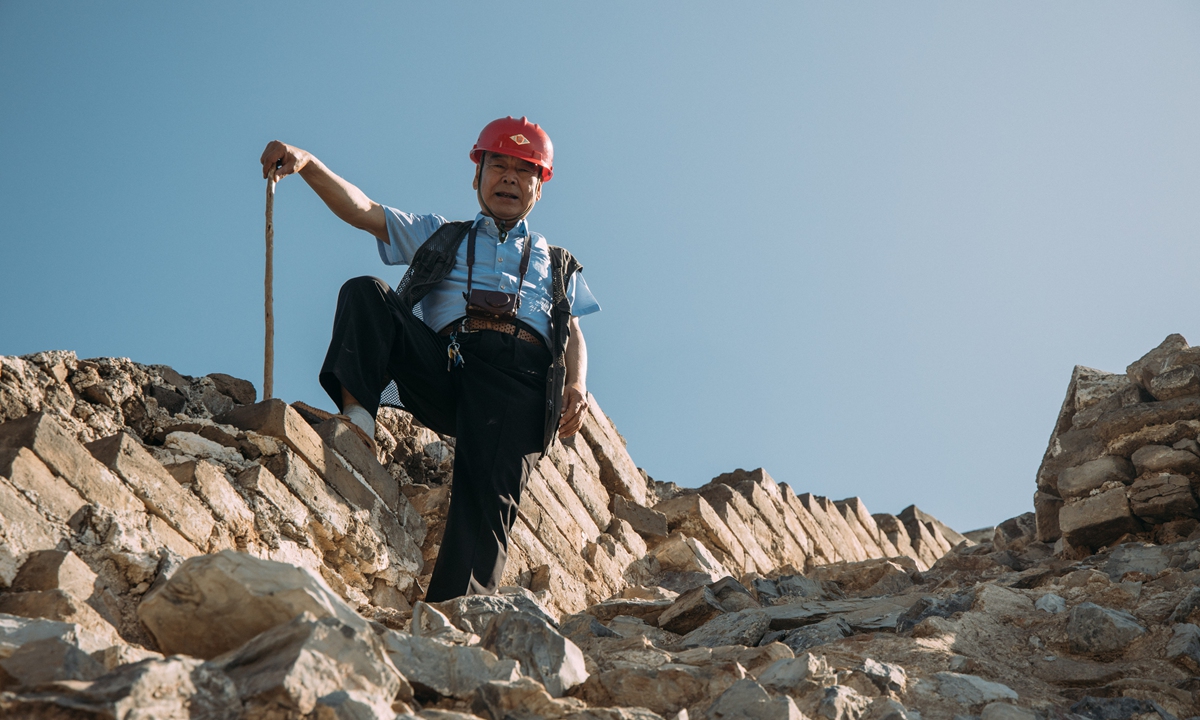
Cheng Yongmao, an expert in restoring ancient buildings who is in charge of the project at Jiankou, rests from directing work on the Great Wall. Photo: Li Hao/GT
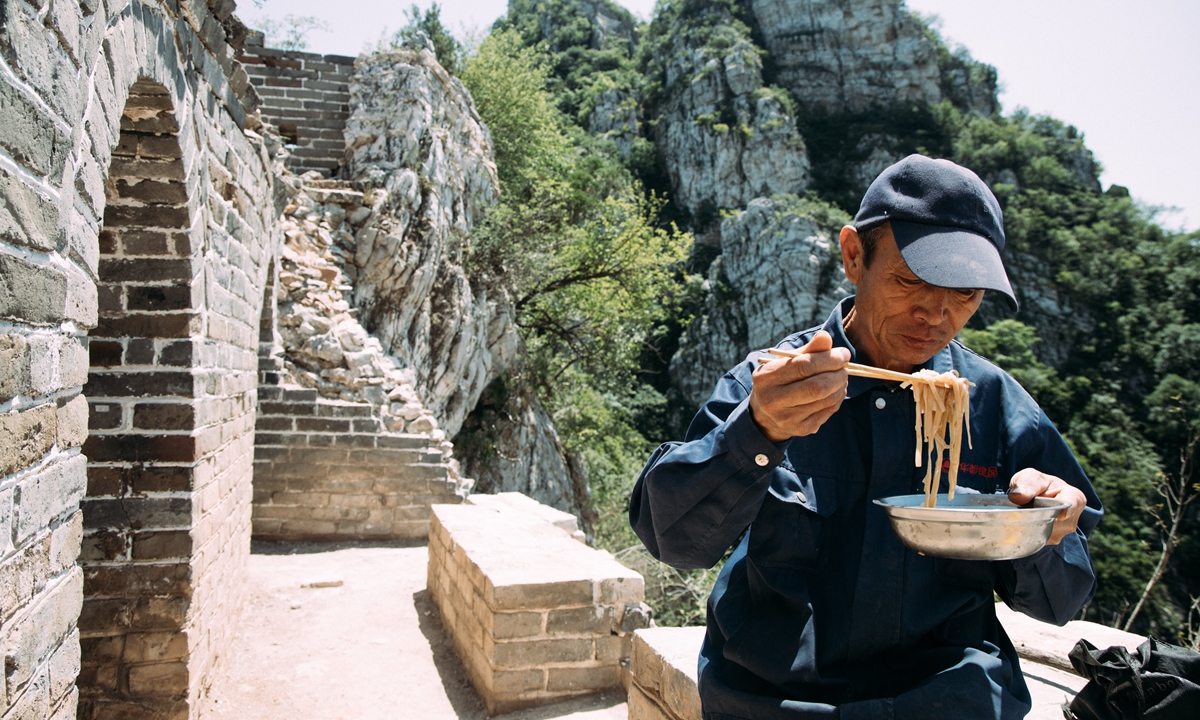
The A worker restoring the Jiankou section has lunch during a break. Photo: Li Hao/GT
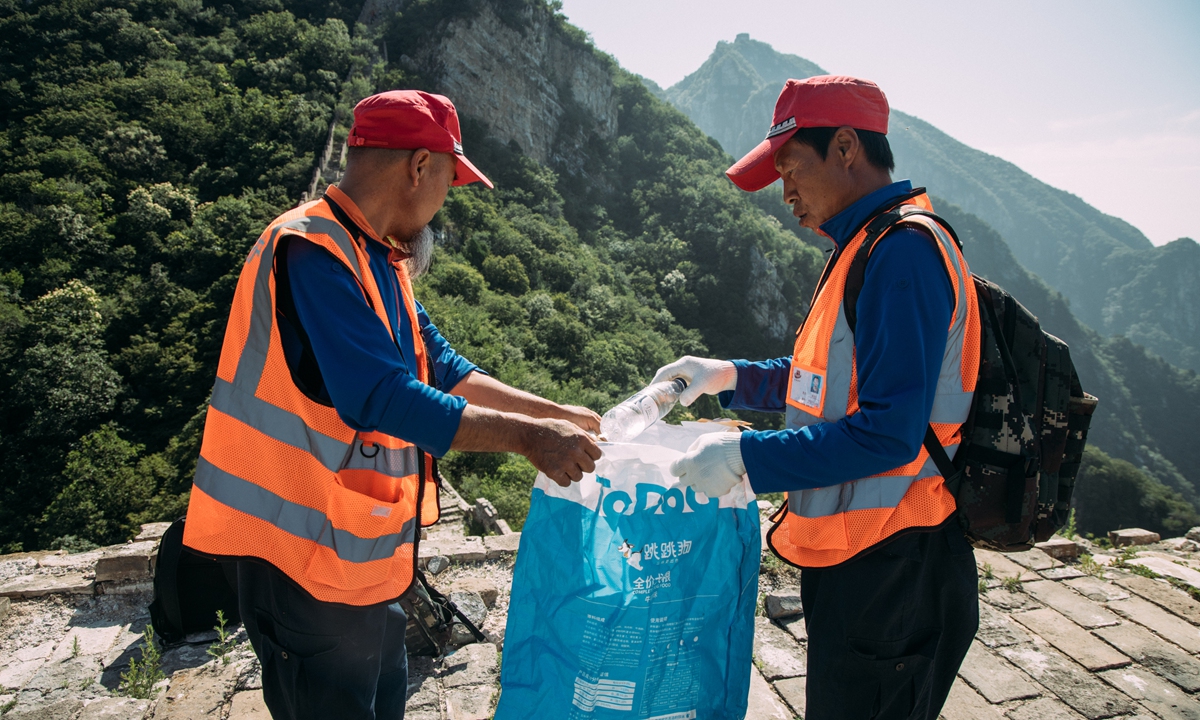
Patrol team members collect garbage on the Great Wall. Photo: Li Hao/GT

